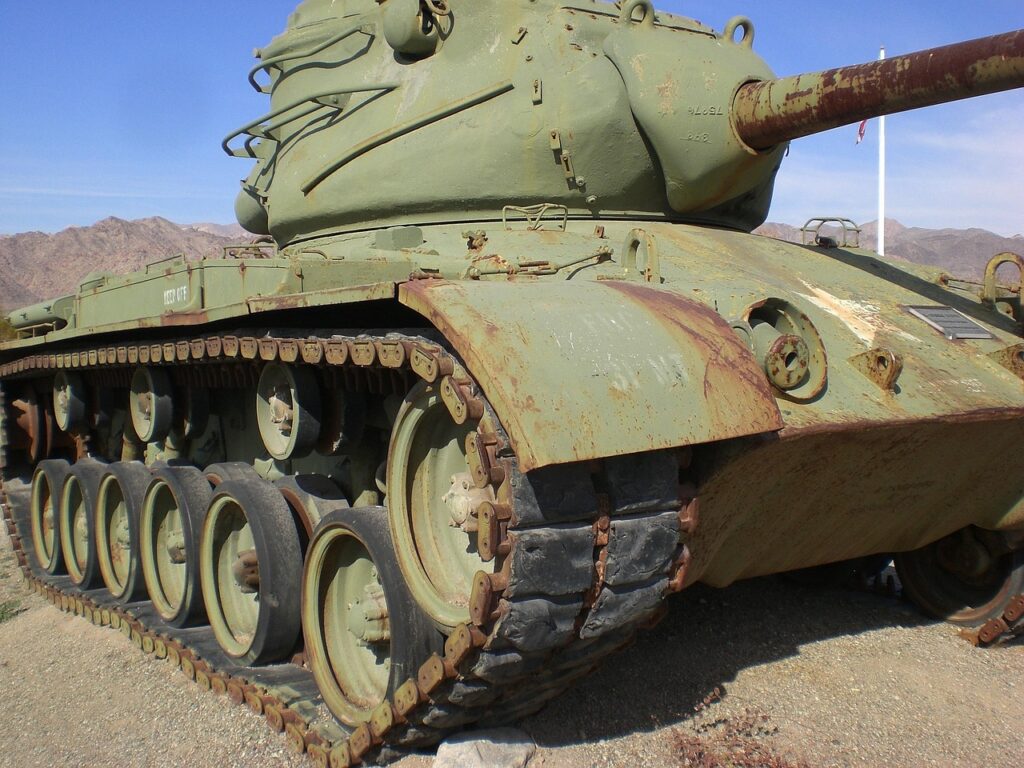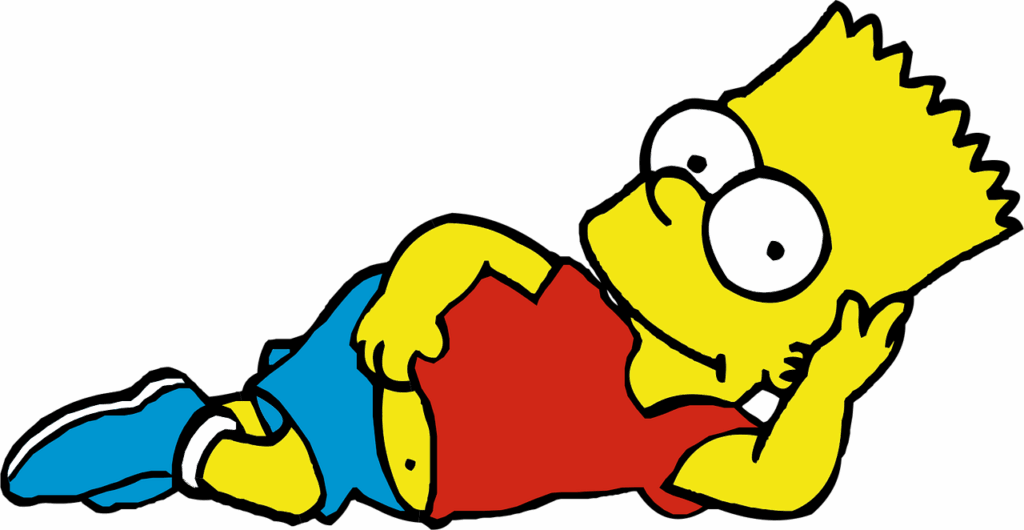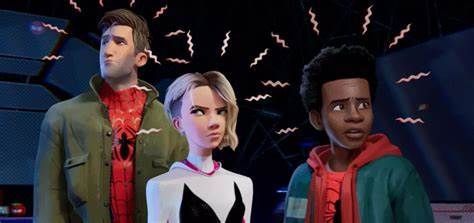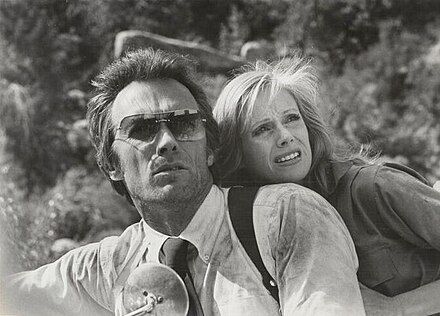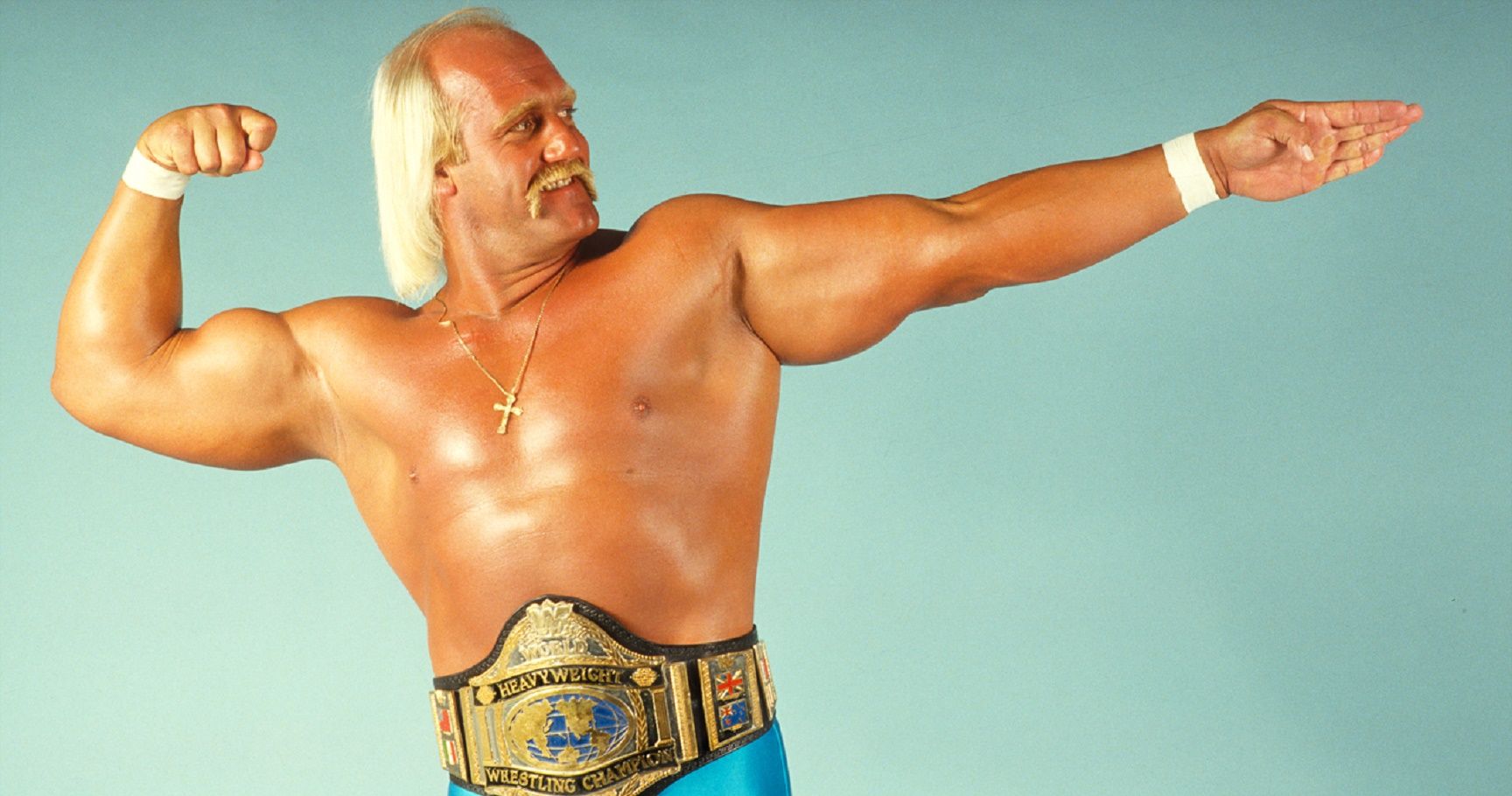
For a show that ran for 168 episodes, premiering in September 1965 and airing its last original episode in April 1971, ‘Hogan’s Heroes’ carved out a unique niche in television history. It dared to mine laughs from World War II, a concept that even today seems, well, audacious. Yet, this iconic sitcom of 60s television proved its staying power, becoming the longest-running American TV series inspired by World War II. Its popularity endures, captivating generations beyond its original boomer fanbase.
But how much do we truly know about the behind-the-scenes magic, the unexpected turns, and the sheer audacity that brought Stalag 13 to life? From casting quirks to set design eccentricities, and from controversial taglines to musical side projects, the making of ‘Hogan’s Heroes’ is rich with trivia that will surprise even the most dedicated fans. It’s a testament to the show’s enduring legacy that these details continue to fascinate, revealing the layers of thought and happenstance that shaped a cultural phenomenon.
Prepare to have your intellectual curiosity satisfied as we embark on a deep dive into the obscure, fascinating facts surrounding this beloved series. We’re about to pull back the curtain on some truly mind-bending minutiae, facts that will make you rethink everything you thought you knew about Colonel Hogan, Colonel Klink, and the rest of the gang. Let’s explore the hidden stories and ‘did you know’ moments that truly define ‘Hogan’s Heroes’ beyond the barbed wire.

1. **The Show’s Unexpected Origin: From Domestic Prison to POW Camp**It’s hard to imagine ‘Hogan’s Heroes’ set anywhere but a German WWII prisoner of war camp. The barbed wire, the guard towers, the constantly outwitted German officers—it’s all part of the indelible image we have of Stalag 13. However, the show’s co-creator, Albert S Ruddy, initially envisioned a vastly different backdrop for his comedic capers.
Ruddy’s original concept for the characters placed them in a domestic prison right here in America. Imagine Colonel Hogan orchestrating escapes from a federal penitentiary! The tone, the humor, and the entire dynamic would have been fundamentally altered, lacking the unique satirical edge that came from its WWII setting.
But fate, or rather, network competition, had other plans. Upon learning that NBC was developing ‘Campo 44,’ a show explicitly set in an Italian WWII POW camp, Ruddy recognized an opportunity for a strategic pivot. He made a couple of drastic revisions to his show’s concept, embracing the WWII setting that would soon become its signature.
What’s truly astonishing is the speed with which this significant transformation occurred. Ruddy revealed in an interview that changing the setting was “no big deal.” In fact, it only took him a single day to adapt the entire show to the World War II prisoner of war camp scenario. This incredibly quick rewrite is often cited as a contributing factor to the show’s immediate impact and success, proving that sometimes the best creative decisions are made under pressure.
This rapid adaptation highlights the underlying strength of Ruddy’s character concepts and comedic premise, allowing them to translate seamlessly across drastically different environments. It’s a powerful reminder that sometimes the core of a story is so robust, it can thrive regardless of its initial packaging.

2. **Richard Dawson’s Accent Journey: From Liverpool to Cockney**Richard Dawson, beloved for his role as Corporal Newkirk of the RAF, brought a distinctive vocal flair to ‘Hogan’s Heroes.’ His character’s Cockney accent became an intrinsic part of Newkirk’s charm and quick wit. However, this wasn’t the accent Dawson originally intended for the role, nor was it his initial ambition for the show.
Before landing the part of Newkirk, Dawson actually auditioned for the titular role of Hogan himself. Picture that! The charming, resourceful leader with a British accent. It quickly became clear during his audition, however, that Dawson couldn’t quite master a convincing American sound, leading him to be cast in the role of the British corporal instead.
Once cast as Newkirk, Dawson initially portrayed the character with an accent hailing from Liverpool. This choice, while culturally authentic to a segment of British society, proved to be a hurdle for American audiences. The “bigwigs” behind the show decided that his Liverpool accent was too difficult for viewers to understand, leading to a demand for a change.
Consequently, Dawson adopted the Cockney accent that became synonymous with Corporal Newkirk. It was a more universally recognizable British dialect for American ears at the time, ensuring his lines landed effectively. Though, it’s worth noting that Dawson’s initial inclination towards a Liverpool accent came at a curious time in the 1960s, a period when “four lads from Liverpool” were breaking out and proving just how captivating that specific sound could be on a global stage.
This accent evolution is a testament to the creative adjustments often made in television production, balancing authenticity with audience accessibility. Dawson’s ability to adapt underscores his versatility as an actor, ultimately crafting an iconic character voice that resonated with millions.
3. **The Outlandish Steam Room Idea for Stalag 13**Stalag 13, the German POW camp at the heart of ‘Hogan’s Heroes,’ is an iconic television set. Its familiar barracks, guard towers, and Commandant Klink’s office are instantly recognizable to fans. Yet, behind the scenes, there were initial discussions about making the camp even more, shall we say, uniquely equipped, with some surprisingly goofy additions proposed for the set.
While the show became famous for its clever trap doors and hidden tunnels—elements that facilitated Hogan’s clandestine operations—these weren’t the only special features considered for the camp. The creators toyed with ideas that went far beyond the practical needs of a POW camp or even the demands of a comedic narrative. They truly thought outside the box, or perhaps, outside the barbed wire.
One of the more peculiar ideas on the table was for Stalag 13 to include a steam room. Yes, a steam room! Imagine Klink or Schultz sweating it out after a hard day of “guarding” prisoners, or Hogan using it as a clandestine meeting spot. This concept, alongside the trap doors and tunnels, aimed to add an extra layer of comedic absurdity to the camp’s design.
However, the “powers that be” ultimately decided that a steam room within a WWII German POW camp was simply too outlandish, even for a satirical sitcom. While ‘Hogan’s Heroes’ embraced humor and stretched the bounds of realism, this particular feature was deemed a step too far into the realm of the unbelievable. It just didn’t quite fit the comedic logic they were aiming for.
The decision highlights the fine line creators walk when blending humor with a historically sensitive setting. While the show certainly took liberties, the steam room idea reveals a moment where even they acknowledged a boundary. It’s a fun glimpse into the early brainstorming sessions that shaped the beloved but comically improbable world of Stalag 13.
4. **The Remarkable Jewish Cast Behind German Roles**Perhaps one of the most poignant and fascinating pieces of trivia about ‘Hogan’s Heroes’ is the real-life background of several of its key cast members. Despite the characters they portrayed—German officers and soldiers within a WWII POW camp—a significant number of the show’s stars were Jewish. This adds a profound layer of irony and resilience to their performances, making their contributions all the more remarkable.
Consider the central German figures: Colonel Klink, portrayed by Werner Klemperer; Sergeant Schultz, played by John Banner; General Burkhalter, brought to life by Leon Askin; and Major Hochstetter, depicted by Howard Caine. Curiously, all four of these actors were Jewish. Furthermore, all but Howard Caine had fled the Nazis during World War II, a personal history that makes their on-screen roles particularly striking.
Adding to this extraordinary fact, Robert Clary, who played the beloved French corporal Louis LeBeau, had an even more direct and harrowing connection to the war. Clary was a survivor of internment in a concentration camp. His ability to then act in a comedic series set in a POW camp, playing alongside actors portraying German officers, speaks volumes about the human spirit and the transformative power of art.
Werner Klemperer, who so brilliantly portrayed the often-hapless head German officer Colonel Klink, personally had no issues with portraying the role as an actor. He famously stated, “I am an actor. If I can play Richard III, I can play a Nazi.” This professional detachment allowed him to inhabit the character with comedic finesse, turning Klink into an iconic figure of authority who was perpetually outsmarted.
However, Klemperer did insist on one crucial clause: Hogan always had to win out over his captors in the end. This stipulation served not only the comedic premise of the show but also acted as a subtle, yet powerful, moral compass, ensuring that even within the realm of satire, good triumphed over the forces represented by the German command. It underscored the showrunners’ intent, as Jewish creatives themselves, to portray German soldiers as “buffoons” as a way of ridiculing fascism, rather than humanizing Nazi actions.
Read more about: Talk About a Plot Twist! These 15 Famous Faces Said Goodbye on Their Own Birthdays!
5. **The Controversial and Ironic Tagline**Catchphrases and taglines often define a show’s public image, and ‘Hogan’s Heroes’ had one that was undeniably attention-grabbing, albeit controversial. It was a line that, despite its creators’ initial reluctance, became inextricably linked with the series: “If you liked WWII…you’ll love Hogan’s Heroes!” This seemingly audacious slogan has a fascinating and ironic origin story.
The tagline didn’t emerge from a carefully crafted marketing campaign or a focus group. Instead, it was jokingly proposed by comedian and author Stan Freberg during an interview with ‘Hogan’s Heroes’ star Bob Crane. The exchange took place in The Sunday Times on September 15, 1965, shortly after the show premiered, capturing the zeitgeist of its early reception.
Freberg, known for his satirical wit, dryly remarked to Crane, “Shall we say, ‘If you liked World War II…you’ll love Hogan’s Heroes?'” It was clearly intended as a sardonic comment on the show’s premise—a comedy set in a WWII POW camp—which, even at the time, raised eyebrows and sparked debate among critics and viewers alike, including some World War II veterans.
Crane, acutely aware of the sensitivities surrounding the show’s subject matter, immediately retorted, “No, let’s not say that, no.” His reaction underscored the discomfort many felt about finding humor in such a somber historical event. He understood the potential for backlash and the perception that the show might be making light of serious wartime suffering.
Despite Crane’s clear reservations and the initial comedic intent behind it, Freberg’s sarcastic suggestion ended up becoming the official tagline for ‘Hogan’s Heroes.’ This ironic twist cemented a phrase that perfectly encapsulated the show’s unique blend of humor and its challenging relationship with historical context. It’s a prime example of how a casual remark can accidentally become a defining statement, shaping public perception for decades to come.
6. **When Hogan’s Heroes Sang the Blues: The Cast Album**The immense popularity of a television show often manifests in various forms of merchandise, some expected, some wonderfully outlandish. In the case of ‘Hogan’s Heroes,’ one particularly unique byproduct of its success was a musical album featuring some of its cast members. This “Sings The Blues” album is perhaps a quintessential piece of evidence of the show’s widespread appeal.
Released amidst the show’s run, the album showcased the vocal talents of several key actors: Robert Clary (LeBeau), Richard Dawson (Newkirk), Larry Hovis (Carter), and Ivan Dixon (Kinchloe). These multi-talented performers stepped out of their comedic roles to record a collection of popular tracks, offering fans a different way to engage with their favorite heroes from Stalag 13.
The album wasn’t just a random collection of songs; it specifically featured a number of popular tunes from the 1940s. This choice was deliberate, as it allowed the cast to perform songs that would have been current or well-known during the era in which the show was set. It added a layer of nostalgic charm, connecting the show’s historical setting with the musical tastes of that time.
Beyond being a fun novelty for fans, the album also reflected a broader cultural trend. Its production and reception were indicative of a growing wave of 1940s nostalgia hitting America during the 1960s. People were looking back fondly on the wartime era, and ‘Hogan’s Heroes,’ with its comedic take on the period, perfectly tapped into that sentiment, offering entertainment that was both new and reminiscent of a bygone time.
This foray into music showcased the diverse talents of the ‘Hogan’s Heroes’ cast, proving they were more than just comedic actors. It also provided a tangible piece of pop culture history that continues to delight collectors and fans, offering a harmonious glimpse into the show’s far-reaching impact and the era’s broader cultural currents.

7. **The Cast’s Attempt to Add Lyrics to the Theme Song**Every classic television show has a memorable theme song, and ‘Hogan’s Heroes’ is no exception. The instrumental theme, instantly recognizable and enduringly popular, became an auditory signature of the series. While most fans know it as a purely orchestral piece, there was actually an attempt by some of the cast members to add their own lyrical twist to the iconic tune.
Yes, the very same vocal talents who recorded the “Sings The Blues” album—Robert Clary, Richard Dawson, Ivan Dixon, and Larry Hovis—decided to lend their voices to the show’s opening music. They embarked on a creative endeavor to infuse the beloved instrumental with words, aiming to give the ‘Hogan’s Heroes’ theme a fresh, vocal dimension that reflected the characters and their exploits.
The lyrics they devised were quite direct and, in their own way, quite charming. They sang: “Heroes, heroes, husky men of war, Sons of all the heroes of the war before. We’re all heroes up to our ear-o’s, You ask the questions”. It was a clear effort to embody the spirit of the show and the brave, if comically resourceful, characters.
While this lyrical version of the theme song certainly showcased the cast’s enthusiasm and vocal capabilities, it didn’t quite catch on. The instrumental theme, on its own, had already become an undeniable classic, ingrained in the minds of viewers. It’s generally agreed upon that the pure, unadulterated instrumental track is probably preferable and has stood the test of time.
This creative footnote offers a delightful glimpse into the collaborative spirit and personal investments the actors had in the show. While their lyrical contribution didn’t become the official version, it remains a fascinating piece of ‘Hogan’s Heroes’ lore, reminding us that even iconic themes sometimes have hidden, vocalized pasts. It’s a testament to the enduring power of instrumental music when it perfectly captures the essence of a story.” , “_words_section1”: “1948

8. **General Burkhalter’s Ride: The Ultra-Rare Mercedes-Benz W31**While much of ‘Hogan’s Heroes’ focused on the ingenious, often absurd, inner workings of Stalag 13, the vehicles that occasionally rolled onto the set also held their own captivating secrets. One particular standout was the rather fancy Mercedes-Benz W31 convertible in which Colonel Klink’s superior, the imposing General Burkhalter, made his grand entrances.
This wasn’t just any luxury car; the Mercedes-Benz W31 was an incredibly rare vehicle, adding a subtle layer of authenticity and extravagance to Burkhalter’s character. Imagine the meticulous eye for detail required to source such an item for a television production! It underscored the perceived status of high-ranking German officers, even in a comedic context.
What truly elevates this piece of trivia is its astonishing scarcity. Only 57 of these stylish convertibles were ever produced. This makes General Burkhalter’s on-screen presence in such a vehicle a remarkable visual choice, a fleeting glimpse of automotive history that many viewers might have overlooked but which speaks volumes about the show’s production values.
After the devastation of World War II, the number of these already scarce cars dwindled even further. A staggering fact reveals that only three of the original 57 Mercedes-Benz W31s remained intact after the conflict. The car used for ‘Hogan’s Heroes’ was one of these incredibly fortunate survivors, a true relic of its time.
And the fate of the other two? One found its way into the hands of the Spanish monarchy, while the third was given an entirely new, practical life, famously converted into a fire engine. This bizarre real-world outcome makes the presence of the ‘Hogan’s Heroes’ car on set even more of a fascinating historical anomaly, a silent testament to its enduring rarity.
9. **Klink’s Off-Screen Virtuosity: A Maestro Behind the Malapropisms**Colonel Klink, the bumbling Kommandant of Stalag 13, was a character rich with comedic flaws, and one of his most endearing running gags involved his utterly abysmal attempts at playing the violin. His screeching, discordant performances were a reliable source of amusement, cementing his image as a man of dubious talents beyond his military duties.
However, in a truly delightful twist of irony that would surely make Klink’s monocle pop, Werner Klemperer, the brilliant actor who brought him to life, was a profoundly skilled musician. Far from Klink’s tuneless scrapes, Klemperer was proficient not only on the violin but also on the piano, showcasing a musical mastery completely at odds with his on-screen persona.
This isn’t merely a casual talent; Klemperer inherited his musical prowess from an incredibly distinguished lineage. His father was Otto Klemperer, a name revered in the world of classical music. Otto Klemperer was a very well-known conductor, a towering figure whose influence resonated throughout the 20th-century German classical music scene.
Imagine the depth of skill and artistic sensibility flowing through Werner Klemperer’s veins, only to be channeled into portraying a character so utterly devoid of it! This stark contrast between actor and role adds a layer of sophisticated humor for those in the know, transforming Klink’s musical failures into an even more remarkable performance.
It’s a testament to Werner Klemperer’s acting talent that he could so convincingly portray musical incompetence while possessing such genuine virtuosity. This piece of trivia offers a charming glimpse into the personal life of a beloved actor, highlighting the hidden depths behind one of television’s most memorable characters.

10. **Ivan Dixon’s Farewell: From Kinchloe to the Director’s Chair**For five seasons, Ivan Dixon graced ‘Hogan’s Heroes’ as the resourceful and intelligent Staff Sergeant Kinchloe, a vital part of Hogan’s crew. However, after the fifth season wrapped, Dixon made a pivotal decision that would forever alter his career trajectory: he chose to leave the hugely popular show.
His departure wasn’t born of animosity but ambition. Dixon felt that ‘Hogan’s Heroes’ was no longer providing him with the opportunities to pursue what he truly desired: serious acting roles and, more significantly, a career in directing. It was a bold move, stepping away from a secure and successful series to chase a different artistic path.
The decision was partly influenced by the show’s contract structure. The main cast members had initially signed a five-year contract. When the series was renewed for two additional seasons, Dixon opted not to agree to the extended terms, signaling his intent to explore other ventures rather than continue in his established role.
His gamble paid off handsomely. Ivan Dixon indeed went on to build a highly successful directing career, helming episodes for numerous iconic television series such as ‘The Waltons,’ ‘The Rockford Files,’ ‘The Bill Cosby Show,’ and ‘Magnum, P.I.’ He proved his directorial chops were just as formidable as his acting skills.
Yet, there was a touch of bittersweet irony to his exit. Dixon later admitted to regretting his decision, realizing that the show was canceled just one season after he left. Had he only stuck around for one more year, he would have seen the series through to its conclusion, but perhaps without the push to truly flourish behind the camera. Despite any frustrations with the show, he was a respected figure on set, ensuring his contributions were always valued.

11. **The Ignominious End of Stalag 13: A Fiery Finale**The set of Stalag 13 is as iconic as the characters who inhabited it, with its familiar barracks, guard towers, and the ever-present barbed wire. It was the backdrop for 168 episodes of comedic espionage, a testament to its enduring presence in television history. This beloved set was originally located on Desilu Productions’ RKO Forty Acres backlot, a hub of filmmaking activity.
Given the show’s immense popularity and cultural footprint, one might assume that such a recognizable set would have been preserved, perhaps as a quirky tourist attraction or at least kept intact for future productions. However, the fate of Stalag 13 after ‘Hogan’s Heroes’ was canceled was far less reverent and surprisingly dramatic.
In 1974, just a few years after the show concluded, a rather drastic decision was made regarding the set. To clear room for the production of the exploitation film ‘Ilsa, She Wolf of the SS’—a title that certainly conjures a stark contrast to the lighthearted ‘Hogan’s Heroes’—the Stalag 13 set faced its ultimate destruction.
Yes, in a move that sounds like something straight out of a Hollywood blockbuster, the iconic set ended up being blown up for the final scene of ‘Ilsa, She Wolf of the SS!’ It was a spectacular, albeit ignominious, end for a set that had brought so much laughter and entertainment to millions of viewers for years.
Interestingly, ‘Hogan’s Heroes’ producers were reportedly quite alright with this explosive send-off. Why? Because it conveniently saved them the cost of having the set demolished through conventional means. So, while Stalag 13 met a fiery, dramatic end, it did so with a practical, cost-saving purpose, closing a chapter in TV history with a literal bang.
12. **Klink’s Animated Comeback: A ‘Simpsons’ Surprise**Long after ‘Hogan’s Heroes’ concluded its original run, Colonel Klink, or at least his distinctive voice, made a surprising and memorable return to the airwaves. It happened in an unexpected corner of pop culture: a cameo appearance in a beloved animated series, offering a fascinating bridge between generations of television viewers.
Werner Klemperer reprised his role as the perpetually frustrated Kommandant Klink, not on screen but purely in voice form, during ‘The Simpsons’ episode “The Last Temptation of Homer.” It was a blink-and-you-miss-it moment that delighted long-time fans and introduced his iconic character to a brand new audience.
In this particular episode, Klemperer’s Klink appears as the voice of Homer Simpson’s conscience after Homer passes out, a surreal and perfectly ‘Simpsons’-esque scenario. The familiar, exasperated tones of Klink urging Homer towards or away from temptation was a comedic highlight, showcasing the enduring power of Klemperer’s vocal performance.
For many millennials or younger members of Generation X, this cameo may very well have been their very first exposure to ‘Hogan’s Heroes’ or to the character of Colonel Klink. It served as a cultural Easter egg, sparking curiosity about the classic sitcom that inspired such a unique animated tribute.
This delightful appearance underscores the lasting impact of ‘Hogan’s Heroes’ and its characters. It also highlights the cleverness of ‘The Simpsons” boomer writing staff, who consistently wove their own cultural touchstones into the fabric of the show, ensuring that classic television moments and voices remained alive and appreciated by new generations.
13. **Barbed Wire and Heels: ‘Hogan’s Heroes’ in Germany**Given its premise—a comedy set in a German prisoner of war camp during World War II—it’s hardly surprising that ‘Hogan’s Heroes’ faced unique sensitivities when it came to international broadcasting. In Germany, in particular, the idea of a satirical take on WWII, even one ridiculing fascism, presented significant challenges for airing.
Indeed, the show’s initial reception and broadcast in its country of origin were starkly different from its American popularity. ‘Hogan’s Heroes’ didn’t make its debut on German television until more than 25 years after its peak popularity in the United States, a considerable delay that speaks volumes about the historical context.
When it finally did arrive on German screens in 1992, it did so under a rather intriguing and vividly descriptive title: ‘Barbed Wire and Heels.’ This moniker alone is a fascinating piece of trivia, painting a picture that might lead one to imagine a show far sexier or more dramatic than the comedic escapades of Hogan and his men.
This title choice, as the context points out, almost makes the show sound like something entirely different, perhaps a pulp adventure or a spy thriller with a dash of glamour, rather than the lighthearted sitcom it truly was. It’s a curious example of how cultural translation can sometimes lead to wonderfully unexpected results.
The delayed broadcast and the distinct German title underscore the complex relationship countries have with their own history and how media—even satirical comedy—is perceived through different cultural lenses. It’s a remarkable footnote in the show’s global journey, revealing the unique challenges of bringing Stalag 13’s humor to a German audience.

14. **The Vietnam Shadow: Why ‘Hogan’s Heroes’ Was Cancelled**’Hogan’s Heroes’ enjoyed considerable success throughout its run, consistently drawing in viewers who appreciated its unique blend of wartime comedy and clever antics. The show was still very popular with audiences when it was unceremoniously canceled during its sixth season in 1971, leaving many fans puzzled by its abrupt departure.
The reason behind its cancellation was not a decline in viewership or creative fatigue; rather, it stemmed from real-world political pressures. The network, CBS, began to feel increasingly uncomfortable about some of the undeniable parallels between the show’s premise and the escalating conflict of the Vietnam War.
At the time, the Vietnam conflict was raging, deeply dividing the United States and fueling intense public debate and protest. In this highly charged atmosphere, a comedic series set in a prisoner of war camp, even one from World War II, began to feel incongruous and potentially insensitive to a network concerned about public perception.
CBS executives grew uncomfortable with the backlash that could potentially emerge over the show’s jokey perspective on conflict between nations. The lighthearted portrayal of war, even satirical, was seen as a risk during a period when real-world military engagement was causing widespread trauma and dissent at home.
Ultimately, the network decided it was time for ‘Hogan’s Heroes’ to go. Despite its popularity and critical success in lampooning fascism, the prevailing socio-political climate made its continued broadcast too much of a liability. It’s a sobering reminder that even fictional narratives are often shaped by the serious realities of their contemporary world.
—
What a journey! From the original conceptual sketches to the grand, fiery destruction of its iconic set, and from hidden musical talents to the subtle political currents that guided its fate, ‘Hogan’s Heroes’ remains a treasure trove of untold stories. This deep dive into its lesser-known facts isn’t just about trivia; it’s about appreciating the layers of creativity, challenge, and sheer audacity that went into crafting one of television’s most enduring and, surprisingly, historically rich comedies. It’s a powerful reminder that even in the most unlikely settings, captivating tales of human ingenuity and unexpected ironies can flourish, leaving an indelible mark on popular culture for generations to come. And now you know even more about it!


